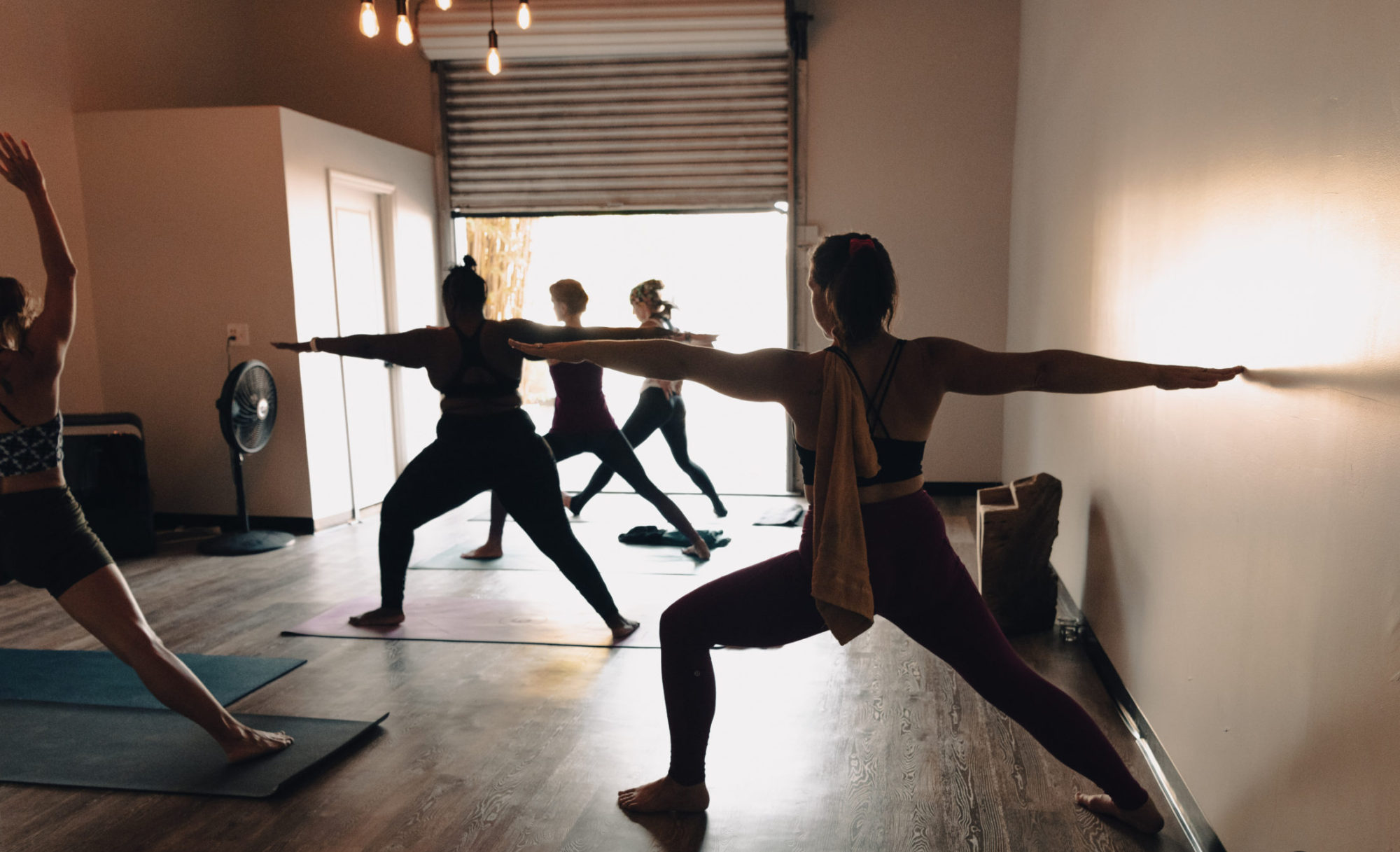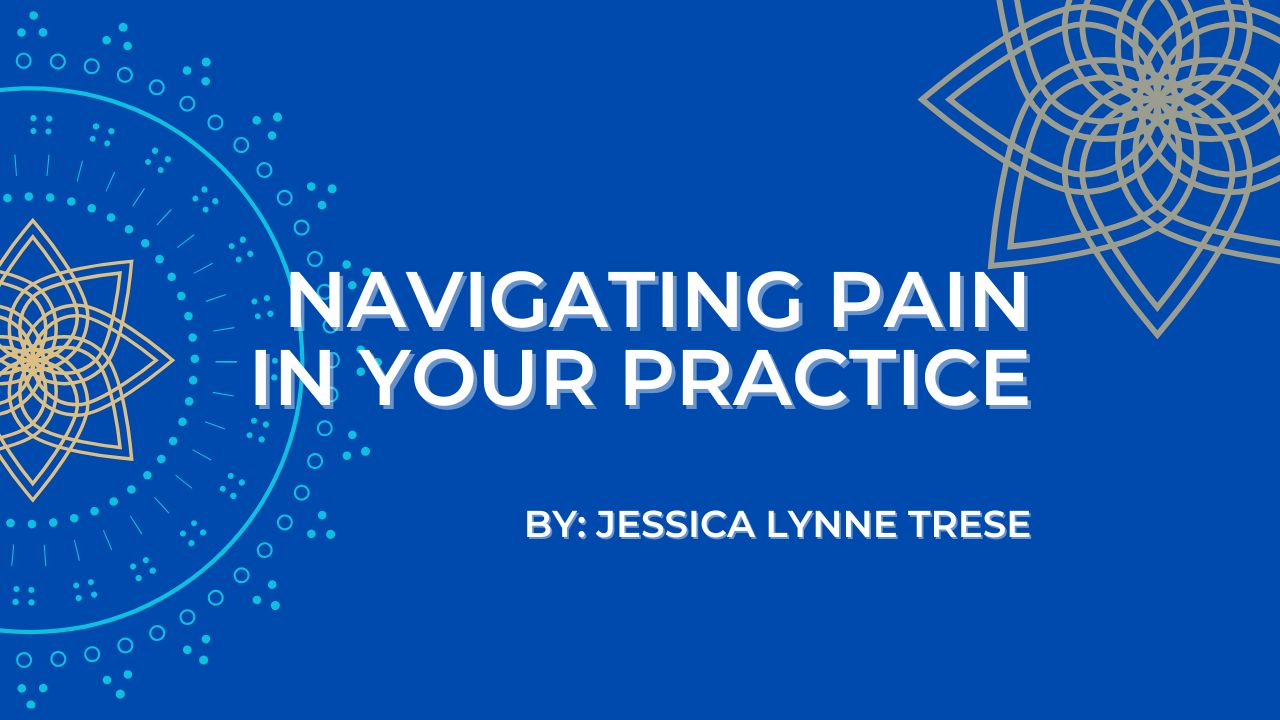There will definitely be times when you’re navigating pain and/or discomfort in your yoga practice. Perhaps it’s in the body. Maybe it’s in the mind. Either way, both are no fun and ideally your practice will be a space for you to heal and move through the pain while learning a little bit about yourself.
There are plenty of obstacles we know we’ll encounter along this path of yoga and physical pain is just one of them. This too, is a powerful grow-point for us in the path of yoga. Pain doesn’t have to mean we stop practicing or even that we pile on more postures/work.
Yoga gives us a chance to confront and heal patterns within us that lead to suffering and away from deeper knowledge of the Self. When pain is arising in the body, this is a powerful opportunity to observe and reflect on conditioned patterns and conditioned thoughts that arise. How do we engage with ourselves, our body when pain arrises?
Do we have an ‘all or nothing’ mentality which leads to either abandoning practice or piling on a bunch more?
Do we force the body to ‘push through’?
Do we shame or blame ourselves?
Or, can we cultivate compassion and gratitude for what is happening and what is possible. The pain is communication from our body about a boundary that is in place. This can be a beautiful opportunity to increase your ability to communicate and honor your experience in the moment.
The Yoga Sūtra texts warns us of the obstacles we’ll encounter along the path of trying to focus and still the mind (yoga).
In Book 1, Sūtra 30, we learn:
व्याधि स्त्यान संशय प्रमादाअलस्याविरति भ्रान्तिदर्शनालब्धभूमिकत्वानवस्थितत्वानि चित्तविक्षेपाः ते अन्तरायाः ॥३०॥
vyādhi styāna saṁśaya pramāda-ālasya-avirati bhrāntidarśana-alabdha-bhūmikatva-anavasthitatvāni citta-vikṣepāḥ te antarāyāḥ ॥30॥
Sickness, disease (pain), doubt, delusion, sloth, non-abstention, false conception, inability to gain firm ground, and a feeling of loosing the ground one has gained, these distractions of the mind are the obstacles.
Perhaps it feels a little reassuring to know that you’re not the only one experiencing obstacles along the path of yoga. If you’re experiencing pain in the body or feeling like you aren’t making any progress in your journey (among other obstacles), you’re not alone.
Even centuries ago, yogis were also encountering these obstacles. Patañjali identified some signs that the obstacles are present.
The next Sūtra identifies the experiences which will be present when one is encountering obstacles:
दुःखदौर्मनस्याङ्गमेजयत्वश्वासप्रश्वासाः विक्षेप सहभुवः ॥३१॥
duḥkha-daurmanasya-aṅgamejayatva-śvāsapraśvāsāḥ vikṣepa sahabhuvaḥ ॥31॥
Sorrow, dejection, restlessness of body (pain, trembling, etc.), imbalance in the breathing arise from the obstacles/distractions.
When obstacles are present, there will be signs. Those signs are sadness, disappointment, pain or trembling in the body, imbalance or absence of control over the breath.
What to do when obstacles are present? The next two Sūtra-s identify a path forward. There is a path forward and the only way these obstacles are going to stop your journey of yoga is if you stop practicing, if you stop trying to continue forward.
The first step to try when encountering obstacles is to try to refocus the mind on a single point. This single point is usually the breath, long even and balanced breath without any pauses.
If that seems impossible, the next step is written out in Sūtra 33:
मैत्री करुणा मुदितोपेक्षाणांसुखदुःख पुण्यापुण्यविषयाणां भावनातः चित्तप्रसादनम् ॥३३॥
maitrī karuṇā mudito-pekṣāṇāṁ-sukha-duḥkha puṇya-apuṇya-viṣayāṇāṁ bhāvanātaḥ citta-prasādanam ॥33॥
By cultivating attitudes of friendliness toward the happy, compassion for the unhappy, delight in the virtuous, and indifference toward the wicked, the mind-stuff retains its undisturbed calmness.
These 4 guidances are sometimes referred to as the ‘keys to peace’ these are the tools we can use when encountering obstacles in the body/mind along this path of yoga.
It’s easy to see their usefulness when dealing with others in our life. However, these keys are the most powerful when we use them with ourselves.
How do we treat ourselves, what inner dialogue arrises when we are happy?
How do we move forward and care for ourselves when we are unhappy?
Do we allow ourselves to celebrate and feel proud when we succeed?
How do we engage with ourselves when we realize we have caused harm to ourselves or others?
These keys are powerful when we apply them to ourselves in the face of pain in our yoga practice too. When we are in pain, we need to use the key of compassion. That compassion usually comes in the form of rest or adaptation in the practice to create space for healing and growth.
When encountering obstacles in your practice, the best thing to do is to pause, refocus on deep, even and continuous breath and then try again. If the breath again falters, or the pain returns in the body the next best step is compassion for the body, compassion for the self. Perhaps shorten the practice or reduce some of the elements that seem to be linked to the obstacles. Resist the urge to shame yourself or pile on more expectations, more requirements.
Reminder, it’s normal for discomfort to arise in this practice of yoga. We’re doing deep work in the body and mind to get to know ourselves and to heal. When discomfort or pain arises in the body, reduce the force and try to find stillness, try to find steadiness.

